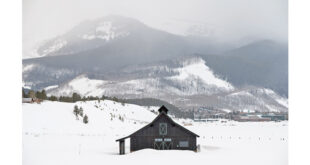The housing issue is on pretty much everyone’s mind at the moment and rightfully so. With three actual “For Rents” in the newspaper classifieds section next to four pages of “Employment” ads, it is no secret there is a problem.
As Crested Butte has transitioned to a higher-end resort town, the old rentals are disappearing thus moving workers down valley and away from service jobs. Despite the wishes of some, everyone is not entitled to a low-cost three bedroom, two-bath house with a yard for the dog in the quietest neighborhood of Crested Butte — even though there are such houses available to some lucky qualifying worker families. But few would dispute that it is best on almost every count to have workers live near their jobs and be an active part of a vibrant community. Hence the current tension as that is more and more rare given economic realities of an increasingly attractive resort town.
While there are more people living in Crested Butte and the north valley than ever, the recent residents have no need to participate in the service industry workforce. As I wrote a few weeks ago, the community has morphed from a labor market to a housing market and that has made affordable housing really hard to find while leaving jobs open everywhere.
The good news is that in the last couple weeks, there has been a cross section of the community pondering the issue. The young people who want to live and work in Crested Butte are brainstorming ideas that culminated in a meeting at a local business. I know of second homeowners that are brainstorming ideas as well. They are looking at it from a traditional business/market perspective and figuring out what steps are necessary to seriously address the issue. Both groups seem to feel a hard reckoning is needed that will culminate in difficult philosophical decisions if the community wants to change the current path.
There are a few factors that people don’t seem to want to voice at the moment. One thing to keep in mind is that the issue impacts different demographics in different ways. It’s not just about you and your friends. The working family with two kids in school has different needs than the 25-year-old taking a gap year to be a lift op.
Again, there are more people living in CB and the north valley than ever before, so the problem isn’t one of the town being hollowed out by second homes. It’s just that new transplants can make enough money outside the tourism business to not need to work in the valley. The former cheap rentals that were drafty with no foundations have been renovated to nice modern residences with good Internet. That leaves the traditional ‘ski bums’ out in the cold.
The CB town council chose to take the Avalanche Park property it owns just south of Crested Butte and put a solar farm on the land. That is an admirable choice but a choice nonetheless. There had been talk of making it a campground and I would argue it might have been a good spot for a summer worker’s campground. But that would have taken significant investment in road improvements, water and sewer access, even if temporary, through trailers and manpower to oversee the camp. Is there another similar spot? It is worth considering.
Local public land managers are struggling with an overflow of tourist campers coming to visit, so new regulations have been imposed to mitigate the swarm and their impact on the local backcountry. Good move. But that has resulted in cracking down on what used to be a group of workers that lived in tents and campers near Crested Butte so they could save money with little or no rent. Again, it is a valid choice that addresses one problem while impacting another.
The Biden administration has continued to bolster state unemployment benefits to the tune of $300/week on top of Colorado’s $600 at the top end. There are some people living here that did the math and figured earning $900/week on the dole was a pretty good deal. Pulling in $3,600 month to ride your bike is indeed a good deal and one I certainly would consider (but probably get bored with). But that choice is bringing real world ramifications to the business community. So is the fact some longtime workers living in workforce housing are now retired and not working.
In the heat of the crisis there seems to be a movement by many to just “do something” and build as much housing for workers as possible as soon as possible. While understandable, there needs to be some strategic thinking involved. The Corner at Brush Creek deal didn’t fall apart just because of the size of the parking lot or the friction between the developer and some local politicians even though both played a role. The two town councils brought up the real impacts of putting 800, 600, 500 new people on that parcel. The concerns included that an already overcrowded CB school would be overwhelmed even more and not only would things like traffic grow exponentially, but learning would be hurt by crowded classrooms. The idea of not enough park space, trail congestion, parking problems, a traffic light or roundabout also came into play. Taking action to address one critical issue has major ripple effects on the other major issues facing a small town.
The same simple idea of turning what is designated as ‘wetland’ behind CBCS into a major 15-building apartment complex applies as well. Of course, we can go all stereotypical developer and dry up whatever we want but not only would that be a major diversion from the environmental ethic of the community it would add how much more traffic to the school area? Talk about a cluster. In the same vein, some advocate for allowing rule changes in town that permit super dense developments and, say, five or six story buildings. That would certainly help the housing issue but understand it would impact much of what we all like as a unique part of a small town. Hello Breckenridge. It’s about choices.
Many also advocate reallocating tax money that ultimately goes to TAPP to market the valley to housing projects. The same has been said of the Crested Butte real estate transfer tax (RETT). The problem there is that the Local Marketing District money is limited in its use by state statute and is prohibited from being used for capital housing projects. The CB RETT is in a similar boat with half specifically designated for open space projects outside of town and the other half for the general capital fund in town. So there is opportunity to use some of the money (the general capital money) for housing projects but designating the entire RETT to housing would put the current revenue source into legal jeopardy under Colorado’s TABOR (Taxpayer’s Bill of Rights) legislations that prohibits any more RETTs.
Many people, even those that are antigovernment, look at the local government to solve the problem. And I believe local officials have taken much responsibility and deserve kudos for actively dealing with the issue. There are hundreds of deed-restricted units in this valley. But what responsibility for employee housing do local employers have? Especially the major employers like Vail Resorts? There has been some business participation is housing mitigation efforts, but should the bulk of the responsibility be on the towns and county?
These are just a few of the uncomfortable realities of addressing the local housing issue. That’s not to say there isn’t opportunity. Good people are actively mulling over possible ways to address the problem. Who knows what will emerge…
Some things to possibly throw in the mix is using the county’s Whetstone property for high density workforce housing but utilizing the Corner at Brush Creek land for a new school expansion (maybe the CBCS middle or high school?) that includes fields and housing for teachers surrounding those fields. The Valley Housing Fund might organize a non-profit or as suggested by a community member a couple weeks ago, a for-profit entity that provides a place for second homeowners that want to invest and contribute to helping solve the local housing issue. They understand the serious situation of seeing their favorite restaurant not being open this summer because of the labor shortage and are probably willing to help. They just need a mechanism to do so. Give them one.
I understand the emotional aspect of the issue and it is valid but it won’t solve the problem. To move toward real solutions will take real strategic thinking and an honest look at the path needed to get there. That won’t be easy. I just hope something really weird and impactful comes out of it so it reflects this unique community.
—Mark Reaman
 The Crested Butte News Serving the Gunnison Valley since 1999
The Crested Butte News Serving the Gunnison Valley since 1999






